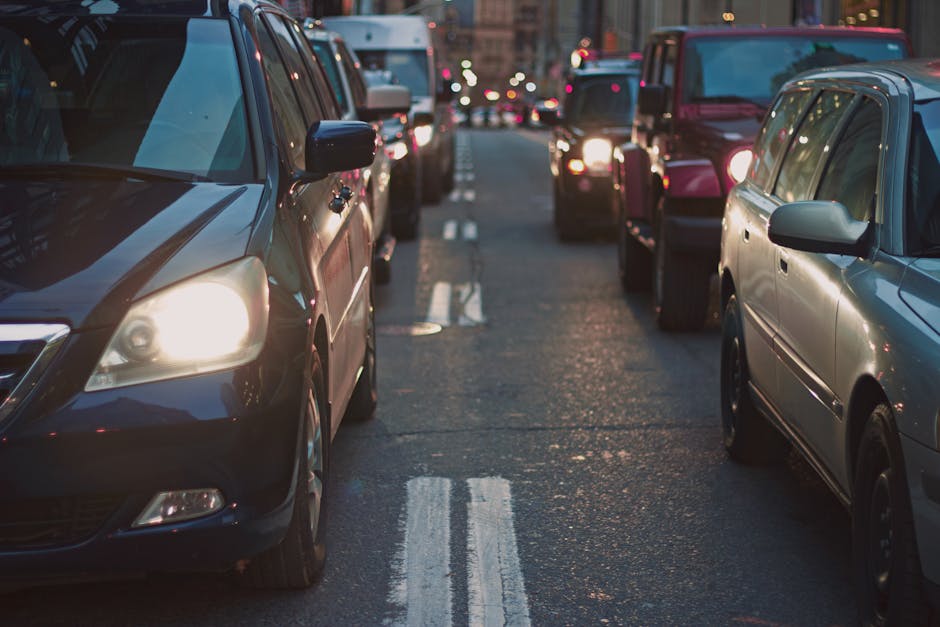
Navigating the Web of Traffic: Unveiling the Benefits and Challenges
Understanding Traffic Flow: Patterns, Peaks, and Declines
traffic flow is a fascinating topic that plays a crucial role in our daily lives. Whether you are commuting to work, running errands, or planning a road trip, understanding traffic patterns can help you navigate efficiently and save valuable time. In this blog post, we will delve into the intricacies of traffic flow, from its various patterns to the peaks and declines it experiences.Patterns:
Traffic flow follows different patterns depending on several factors such as time of day, day of the week, and even seasons. Rush hours during weekdays often witness heavy congestion as commuters flock to and from work. Typically, mornings are characterized by inbound flows towards city centers, while evenings have outbound waves as individuals head back home. Weekends might see shorter rush hours and spread-out traffic due to leisure activities.
Apart from daily patterns, traffic flow can exhibit longer-term variations such as monthly or seasonal patterns. You might notice increased congestion during summer vacations or holiday seasons when people embark on trips. Tourist destinations may experience peaks during specific months or even days of the week.
Peaks:
Peak traffic refers to periods of particularly high volume where roadways become severely congested. These peaks are usually associated with rush hours but can vary depending on the region or locality. For instance, in urban areas, morning peak traffic can start from early morning around 7 am, while evening peaks occur later between 5 pm to 7 pm.
During these peak periods, roads become packed with vehicles, resulting in slower speeds and increased travel times. Understanding peak traffic times is essential for commuters who wish to plan their journeys navigated by less-congested routes or alternative modes of transportation.
Declines:
Just as traffic experiences peaks, it also witnesses declines. These are periods of reduced flow and relatively lighter congestion. Declines often occur during off-peak hours when fewer vehicles occupy the roads due to businesses closing for the night or early morning lulls.
Timing is key to identifying declines in traffic flow. Late evenings and early mornings, typically between 10 pm and 6 am, showcase minimal traffic congestion. Residential areas might experience shorter time slots with decreased traffic, whereas commercial or highway segments might have relatively longer declines.
Observing declining patterns can be advantageous for individuals seeking efficient travel routes or delivery companies optimizing their service schedules. They can utilize these periods of lighter traffic to avoid navigating congested roads and enhance time management.
In conclusion, understanding traffic flow entails recognizing its various patterns, the peaks of heavy congestion during rush hours, and the declines that offer opportunities for smoother travel. Being familiar with these fluctuations empowers drivers, commuters, and transportation planners to make informed decisions when navigating roadways. By utilizing this knowledge, we can not only reduce travel times but also contribute to lessening overall congestion on our roads, thus creating more efficient and enjoyable journeys for everyone.

The Psychology Behind Road Rage: Managing Emotions on the Road
Road rage is a widespread issue that affects numerous drivers daily. Understanding the psychology behind road rage can help individuals manage their emotions and maintain composure while driving.- Triggering Factors:
Road rage is often provoked by various triggering factors such as heavy traffic, excessive honking, tailgating, being cut off, or witnessing other aggressive behavior on the road. These triggers may activate anger, frustration, or irritation within a person. - Nature of Emotions:
Emotions experienced during road rage episodes can range from annoyance to extreme anger. In such situations, drivers may feel a sense of disrespect, injustice, or infringement on personal space. It's crucial to recognize and acknowledge these emotions to address them effectively. - Psychological Reactions:
Road rage triggers emotional responses that may impact an individual psychologically. Anger can lead to an increased heart rate, shallow breathing, muscle tension, and difficulty concentrating on driving. These reactions not only impair decision-making but also pose risks to one's safety and the safety of others. - Cognitive Distortions:
During road rage incidents, cognitive distortions come into play. Drivers might engage in black-and-white thinking, assuming that other motorists deliberately caused them harm or inconvenience. It's crucial to challenge these distorted thoughts and adopt more rational perspectives when faced with aggressive driving situations. - Attribution Theory:
The attribution theory comes into play when assigning meaning or motives to another person's actions on the road. Drivers may wrongly believe that another individual intentionally aimed to provoke them through their behavior. Considering alternative explanations can contribute to reducing anger and instigating empathy. - Empathy Development:
Practicing empathy is essential for managing road rage effectively. Attempting to understand other drivers' perspectives rather than assuming malevolence can foster healthier emotional responses. Recognizing that everyone makes occasional mistakes can increase tolerance and reduce negative emotions. - Stress Management Techniques:
Implementing stress management techniques can help dissipate frustrations while driving. Deep breathing exercises, listening to calming music, or using techniques like cognitive reframing can redirect attention away from provocative situations and enable individuals to regain emotional equilibrium. - Mindfulness Practice:
Adopting mindfulness techniques can assist in managing emotions on the road. Focusing one's attention on the present moment, rather than ruminating about perceived wrongdoings, allows drivers to maintain a more relaxed state of mind while navigating traffic hurdles. - Seeking Professional Help:
In extreme cases where road rage significantly impacts daily life, seeking professional help is advisable. Mental health professionals can provide valuable guidance and support in addressing deep-seated emotional issues and anger management skills specifically tailored to road rage triggers. - Road Safety Awareness:
Promoting road safety awareness among all drivers is crucial to address road rage effectively. Education campaigns emphasizing defensive driving, respecting traffic rules, and advocating for responsible behavior can contribute to a safer and more harmonious driving experience for everyone.
By understanding the psychological factors involved in road rage incidents, individuals can find effective ways to manage their emotions, promote safer driving habits, and improve overall road safety. It's imperative to prioritize emotional control, empathy development, and stress management techniques to contribute positively to the roads we share.
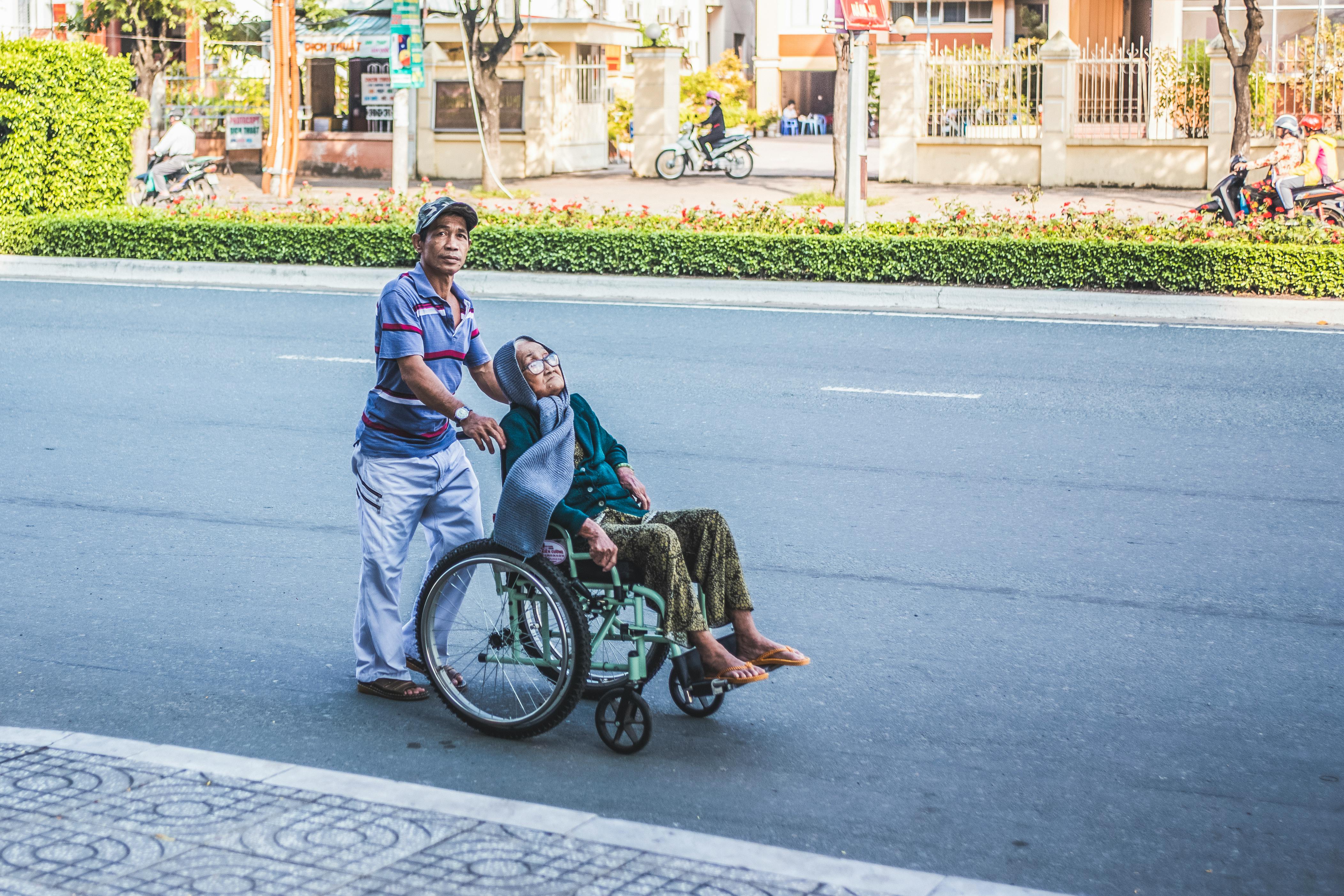
Urban Planning and Traffic Management: Innovations for Smoother Commutes
Urban planning is a vital field that focuses on designing and managing cities to ensure efficient and sustainable development. One crucial aspect of urban planning revolves around traffic management, aiming to enhance the flow of vehicles and pedestrians for smoother commutes within crowded urban areas. In recent years, numerous innovative solutions have emerged which have greatly contributed to improving traffic flow and reducing congestion.One of the significant innovations in traffic management is the implementation of Intelligent Transportation Systems (ITS). ITS utilizes advanced technologies such as sensors, cameras, and data analysis to monitor traffic conditions in real-time. With this information, traffic lights can be timed more effectively, adjusting signal patterns based on real-time demands. The system may also provide up-to-date information to drivers through various means, such as mobile apps or electronic display boards, enabling them to make informed decisions regarding routes and timings. This technology has proven to be highly effective in optimizing traffic flows and reducing delays.
Another notable innovation is the concept of congestion pricing. Implemented in several cities worldwide, congestion pricing involves charging a fee for driving through specific areas or during peak hours. By discouraging unnecessary trips and incentivizing carpooling or using public transportation, this approach reduces traffic volumes during congested periods, leading to smoother commutes for those who remain on the road.
Additionally, urban planners have turned their attention to alternative transportation options as a means of reducing reliance on private vehicles. Initiatives like bike-sharing programs and creating dedicated bike lanes not only promote healthier lifestyles but also relieve some of the congestion caused by cars. The integration of various forms of public transportation, such as bus rapid transit (BRT) systems or light rail networks, allows for more efficient movement of passengers across the city by providing affordable and reliable alternatives to driving.
Furthermore, urban planning has embraced the concept of mixed-use development to enhance traffic management in cities. By strategically integrating residential, commercial, and recreational spaces within close proximity, people can access essential amenities without traveling long distances, reducing unnecessary traffic. This approach also encourages more sustainable and pedestrian-friendly neighborhoods, where residents can walk or bike to their daily necessities, further alleviating traffic congestion.
In recent years, the rise of smart infrastructure has offered solutions to address traffic challenges. This includes incorporating smart intersections and traffic signals that adjust their timing based on real-time traffic volumes. Furthermore, the emergence of autonomous vehicles promises a revolutionary change in traffic management. Self-driving cars can potentially optimize traffic flow by communicating with each other and infrastructure, reducing accidents, improving efficiency, and shortening travel times.
Effective urban planning endeavors also involve the provision of ample parking facilities near transit hubs. Encouraging a shift from driving continuously into utilizing public transportation benefits commuters who can conveniently park their cars at transit stations. By facilitating intermodal connections and promoting use of multiple transportation options, cities can effectively manage the traffic associated with daily commuting.
In conclusion, urban planning and its innovations have significantly contributed to improving traffic management and creating smoother commutes in crowded urban areas. From Intelligent Transportation Systems and congestion pricing to fostering alternative transportation options and mixed-use development, thoughtful urban planning leads to sustainable urban growth while ensuring efficient mobility for residents and visitors alike. By embracing technological advancements and prioritizing multimodal connectivity, cities can continue to meet the evolving transportation needs of their populations while mitigating traffic congestion effectively.

The Environmental Impact of Traffic Congestion: Pollution and Solutions
traffic congestion is a persistent problem in many urban areas, leading to numerous negative impacts on the environment. One of the most significant environmental consequences of traffic congestion is pollution. Let's delve into the various aspects of this issue along with potential solutions.Air pollution is a major concern associated with traffic congestion. Vehicles stuck in traffic emit harmful pollutants such as carbon monoxide (CO), nitrogen oxides (NOx), volatile organic compounds (VOCs), and particulate matter (PM). These pollutants not only contribute to poor air quality but also pose serious health risks, including respiratory diseases and cardiovascular problems. Additionally, prolonged exposure to these pollutants can lead to long-term environmental damages.
Furthermore, traffic congestion significantly increases fuel consumption and greenhouse gas emissions. When vehicles remain idle or move at slow speeds due to congested roadways, engines burn more fuel inefficiently, producing excessive carbon dioxide (CO2). CO2 is a major contributor to climate change and global warming. Moreover, traffic-related emissions also contribute to the formation of smog layers in cities, worsening air quality even further.
Noise pollution is another consequence of traffic congestion that affects both the ambiences and individuals' well-being. The constant honking, engine noises, and screeching brakes add to the overall noise levels, causing stress, sleep disturbances, and hearing impairments for those residing near busy thoroughfares.
Several possible solutions exist to mitigate the environmental impact of traffic congestion. Firstly, improving public transportation systems can encourage people to rely less on private vehicles. By making buses, trains, or trams more convenient, reliable, and affordable options for commuting, individuals may choose these greener alternatives over driving alone.
Implementing efficient carpooling or ride-sharing programs can also help reduce traffic volume. By reducing the number of vehicles on the road during peak hours, congestion can be minimized. Additionally, encouraging flexible working hours or promoting telecommuting options can alleviate rush hour congestion, letting employees avoid commuting altogether or at least travel during off-peak times.
Another viable solution is investing in and promoting eco-friendly vehicles. Advancements such as electric cars and hybrids produce significantly fewer emissions, offering substantial environmental benefits compared to conventional gasoline-powered vehicles. By incentivizing their adoption through subsidies or credits, more people might be encouraged to switch to greener alternatives, thereby reducing pollution.
Furthermore, developing well-planned infrastructure that includes additional lanes, bypasses, flyovers, and bike lanes can improve traffic flow management. These measures not only reduce congestion but also enhance safety while minimizing the negative environmental effects on air quality and noise pollution.
Efforts should also be made to educate individuals about the importance of adopting sustainable transportation practices and their benefits. Campaigns focused on increasing awareness regarding the environmental consequences of traffic congestion might help change people's behaviors and encourage them to make eco-conscious choices.
In conclusion, traffic congestion takes a significant toll on the environment. Pollution caused by congested traffic harms air quality, contributes to climate change, and affects overall well-being due to noise pollution. However, by embracing sustainable solutions like enhancing public transportation systems, promoting carpooling and telecommuting options, investing in eco-friendly vehicles, improving infrastructure, and raising awareness among individuals, we can strive towards a greener and more sustainable future with reduced environmental impact from traffic.
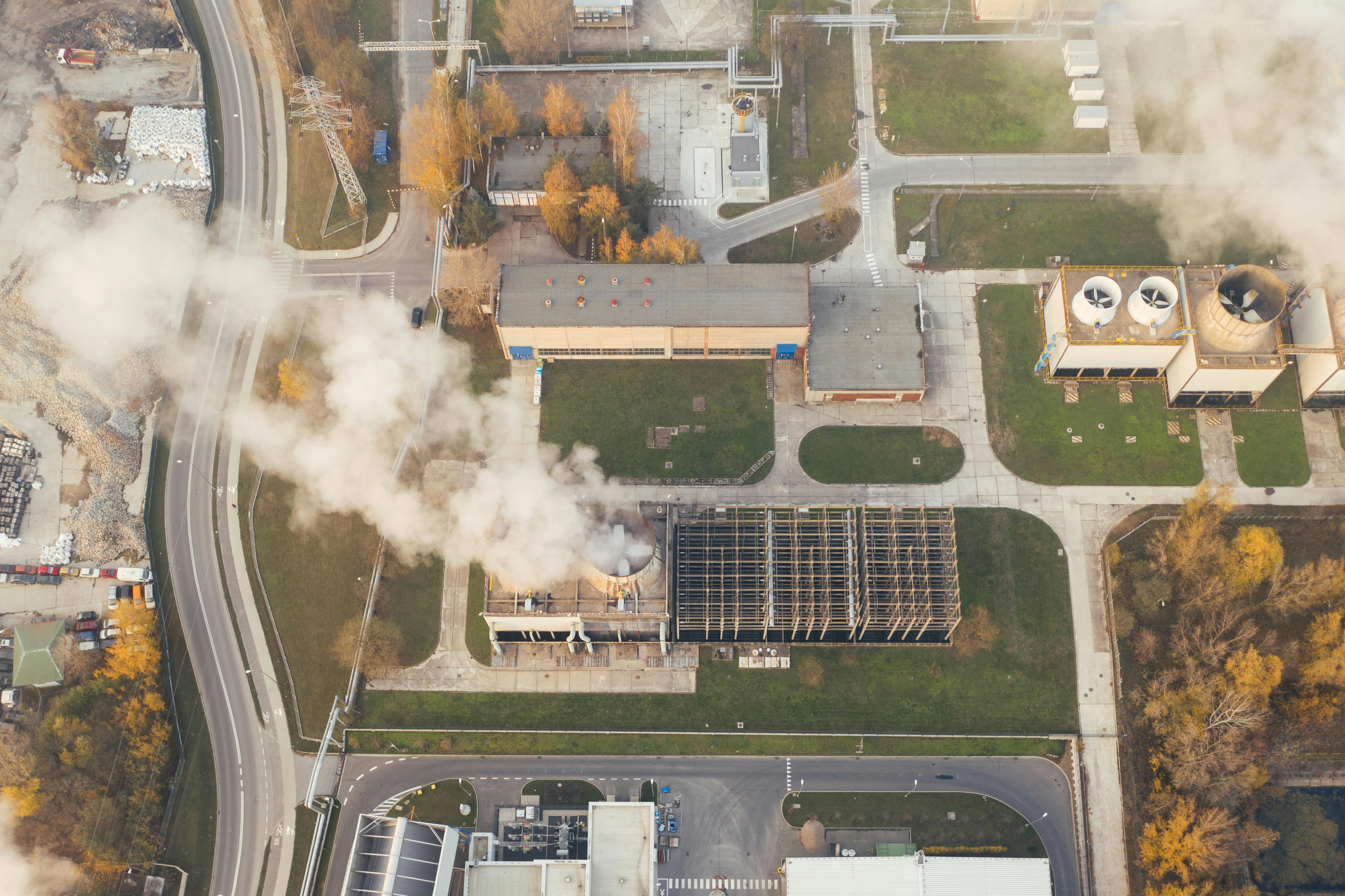
Navigating Through Traffic with Technology: Apps and Advanced GPS Systems
Navigating through traffic can often be a frustrating experience – the endless queues, unexpected road closures, detours, and frequent delays. However, with advancements in technology, we now have access to a variety of apps and advanced GPS systems designed to help us navigate through traffic more efficiently. These tools come packed with features that can make our journeys smoother and hassle-free.Firstly, there are numerous smartphone apps available that provide real-time traffic updates and alternative route suggestions. Apps like Waze, Google Maps, and Apple Maps utilize crowd-sourced data to keep you informed about accidents, road construction, and heavy congestion. They calculate the fastest route based on this information and redirect you accordingly. In addition, these apps constantly update their directions as they receive new traffic reports or perceive changes in your travel pattern.
Another notable feature of these apps is their ability to give alerts about speed traps, police presence, potholes, or any other obstacles along your route. This helps you avoid any potential issues and save valuable time on your journey. Furthermore, they often incorporate voice-guided navigation so that you can keep your eyes on the road instead of constantly glancing at your phone for directions.
In addition to smartphone apps, many vehicles now come equipped with advanced built-in GPS systems. These systems provide a myriad of features specifically tailored for directing drivers through heavy traffic conditions. For example, some models have real-time traffic routing capabilities based on historical and live data gathered from external sources. This information allows the GPS system to generate the best possible route, taking into account current congestion levels.
Moreover, advanced GPS systems usually include other helpful features such as lane-guidance assistance. With this feature, you are notified ahead of time about upcoming turns or lane changes through visual or audio cues. This makes it easier for you to navigate complex junctions or multi-lane roads confidently.
Another advantage of certain advanced GPS systems is their integration with voice command technology. This enables you to stay focused on driving by simply speaking your destination rather than inputting it manually. It enhances convenience and reduces the risk of distractions.
Additionally, several GPS systems incorporate additional functionalities like weather forecasts, restaurant and hotel recommendations, petrol station locations, and nearby points of interest. These extra features enhance the overall navigation experience and add value even beyond managing traffic.
In conclusion, technology has revolutionized how we navigate through traffic. Smartphone apps and advanced GPS systems have become indispensable tools for drivers seeking to navigate routes efficiently. With real-time traffic updates, alternative route suggestions, live data integration, and user-friendly features like voice-guided navigation, lane assistance, and destination input via voice commands, these technological advancements have positively impacted our ability to tackle congested road conditions. By taking advantage of these tools, we can navigate through traffic with greater ease and make our journeys less stressful.
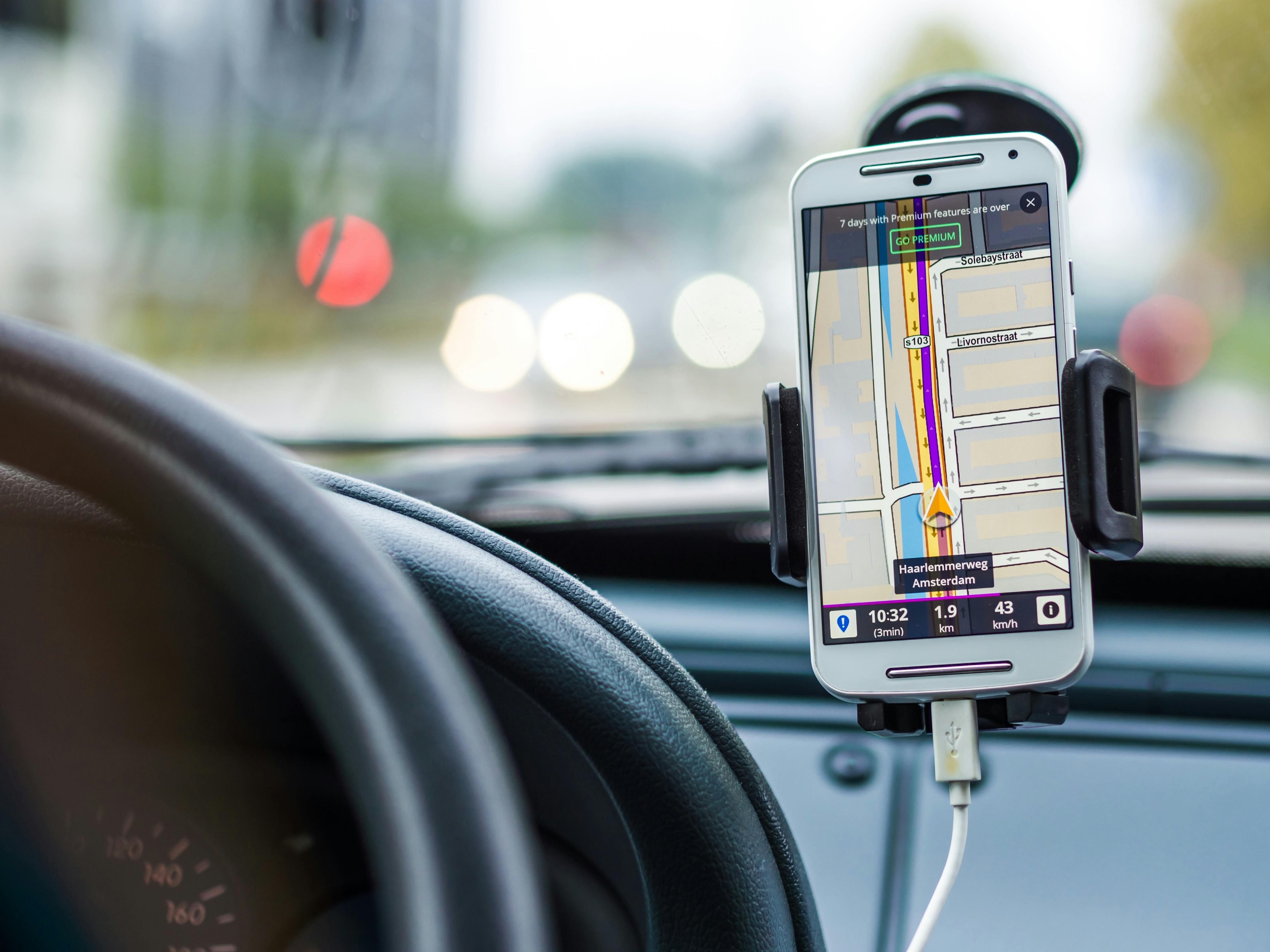
The Economic Cost of Traffic Jams: A Deep Dive into Productivity Losses
traffic jams are a persistent problem in cities around the world, causing significant economic costs and productivity losses. The negative impact of traffic congestion affects various aspects of our lives, including our daily commutes, business operations, and overall quality of life.One major economic cost associated with traffic jams is the loss of productivity. When vehicles are stuck in gridlock, valuable time is wasted, resulting in longer travel times for individuals and businesses alike. This increased time spent on the road brings several detrimental consequences.
For individuals, a longer daily commute due to traffic congestion leads to stress, fatigue, and decreased well-being. The time that could have been spent more productively at work or with family is negligibly reduced due to sitting in traffic. Moreover, this prolonged travel time also incurs additional costs such as increased vehicle maintenance, fuel consumption, and parking expenses for commuters.
Businesses face substantial disruptions caused by traffic congestion as well. When employees are consistently delayed due to heavy traffic while commuting to work, they arrive late, worsen work-life balance, productivity suffers, and overall morale decreases. In addition to direct impacts on employees, transportation delays can adversely affect supply chains and distribution networks. Goods and services may not reach customers on time resulting in customer dissatisfaction and potential loss of market share.
Moreover, consistent traffic jams can discourage foreign investments as businesses prefer locations with better transportation infrastructure facilitating smoother movement of resources and human capital. Consequently, this lack of investment hampers economic growth and development for regions suffering from severe traffic congestion problems.
Communities with high levels of traffic congestion often experience decreased job opportunities because businesses may choose to avoid establishing new operations in these areas due to unreliable transportation networks. Additionally, the elevated possibility of accidents occurring during heavy traffic leads to higher insurance premiums reflecting the increased risks associated with operating within congested cities.
Investing in infrastructure development can significantly mitigate the economic cost of traffic congestion. Constructing new roads or expanding existing ones, creating dedicated bus lanes, robust public transit systems, and adopting intelligent transportation solutions are viable strategies to manage traffic effectively. Promoting telecommuting, carpooling and incentivizing reductions in individual vehicle usage can also alleviate congestion.
In conclusion, the economic cost of traffic congestion is multi-faceted and affects individuals, businesses, and communities as a whole. Lost productivity due to longer travel times and increased expenses incurred by both commuters and businesses underscore the negative impact of traffic congestion. Effective transportation planning and investment in infrastructure are crucial to combat traffic congestion's economic ramifications while striving for more sustainable and efficient cities for the future.

Public Transportation vs Personal Vehicles: A Comparative Look at Traffic Effects
When it comes to tackling traffic congestion, the contrast between public transportation and personal vehicles is undeniable. Let's dive into the compelling factors that differentiate the two modes of transportation:Public Transportation:
Public transportation encompasses a wide range of means such as buses, trains, light rail systems, subways, and trams. So how does it affect traffic?
- Alleviating Congestion:
One immediate advantage of utilizing public transportation is its capacity to mitigate traffic congestion. By accommodating a significantly larger number of people in a shared vehicle, public transit helps reduce the number of individual cars on the road. Consequently, this lowers the overall volume of traffic. - Dedicated Lanes:
Many urban areas prioritize public transportation by establishing dedicated lanes solely for these vehicles. This calms traffic flow as they have separate routes or enjoy right-of-way privileges, bypassing congested areas that personal vehicles regularly encounter. - Reduced Parking Demands:
Considering space limitations in city centers and bustling areas, widespread usage of public transportation relieves the burden on parking infrastructure. A single bus or train can transport numerous passengers at once, eliminating the need for each individual to locate parking spots. - Environmental Impact:
Public transportation presents a promising solution in terms of air quality and pollution reduction since it limits emissions per person transported. By replacing numerous car trips with a single public transit journey, we considerably reduce harmful pollutants like carbon dioxide (COâ‚‚) emissions.
Personal Vehicles:
On the other hand, personal vehicles translate to private transportation directed by individual preferences and schedules. Let's explore their effects on traffic patterns:
- Increased Congestion:
The proliferation of personal vehicles inevitably leads to heightened road congestion. As multiple individuals travel separately in their cars, commuting times increase due to overcrowded streets and more cars vying for limited spaces. - Parking Challenges:
Large numbers of personal vehicles en route lead to a colossal demand for parking spaces in urban areas. Consequently, locating and securing parking spots turns into a time-consuming and challenging ordeal. - Traffic Accidents:
Unfortunately, personal vehicle usage contributes to the occurrence of traffic accidents. With more vehicles on the road combined with varied driving skills, accidents become frequent, further intensifying congestion while authorities work towards clearing the affected areas. - Environmental Footprint:
Compared to public transportation, personal vehicles emit significantly higher amounts of pollutants. Combustion engine-driven cars release carbon monoxide (CO), nitrogen oxides (NOâ‚“), and carcinogenic particles, directly impacting air quality and human health.
In conclusion, public transportation stands out as an effective means to combat traffic congestion. Its high capacity, dedicated lanes, reduced parking demands, and positive environmental impact all bode well for reducing traffic volume. Conversely, personal vehicles contribute to increased congestion, searching for parking spaces, traffic accidents, and a hefty environmental footprint. By exploring alternative modes of transportation and expanding accessible public transit options, we can pave the way towards a smoother traffic situation for our communities.

Traffic Safety Measures: Reducing Accidents and Enhancing Road Security
traffic safety measures are essential to reduce accidents and enhance road security. By implementing various strategies and practices, we can effectively make our roads safer for everyone. Here are some important factors to consider:- Traffic laws and regulations: Establishing comprehensive traffic laws and regulations is crucial for maintaining order on the roads. Proper enforcement of speed limits, seat belt usage, and traffic signal rules helps minimize accidents.
- Road infrastructure improvement: Enhancing road infrastructure plays a significant role in ensuring safety. Constructing well-designed roads with proper signage, clear lane markings, adequate lighting, and properly placed barriers helps improve visibility and reduce the risk of accidents.
- Pedestrian safety: Effective traffic safety includes consideration for pedestrians. Creating designated crosswalks, sidewalks free from obstacles, and installing accessible footpaths or pedestrian overpasses significantly reduces accidents involving pedestrians.
- Speed management: Speeding contributes to a large percentage of traffic fatalities. Implementing measures such as Speed Limits enforcement, speed bumps, speed cameras, and radar speed signs aids in managing and reducing speeding-related accidents.
- Controlling drunk driving incidents: Drunk driving is a leading cause of severe accidents. Strict enforcement of laws related to drinking and driving should be enforced through sobriety checkpoints, random breath tests, and public awareness campaigns about the potential consequences of driving under the influence.
- Distracted driving prevention: With the rise in smartphone usage, distracted driving represents a major threat on the roads. Awareness programs regarding cognitive distractions, restricting phone usage while driving, and implementing penalties serve as effective measures to curb this dangerous habit.
- Improvement of driver education and licensing systems: Ensuring that drivers are well-educated about road safety best practices before they are granted a license is vital. Emphasizing defensive driving skills, highlighting the importance of following road signs, and training on navigating hazardous conditions contribute significantly to reducing crashes.
- Alcohol interlock systems: Installing alcohol interlock devices in vehicles of convicted drunk driving offenders helps prevent them from reoffending. These devices measure the driver's breath alcohol concentration and prevent the car from starting if the limit exceeds the specified threshold.
- Emphasizing seat belt usage and child restraint laws: Wearing seat belts significantly reduces the risk of severe injury or death in accidents. Implementing strict seat belt laws and promoting child restraint systems, such as car seats for infants, helps protect occupants of vehicles, especially children.
- Encouraging responsible behavior: Promoting responsible behavior among all road users is crucial. Campaigns that create awareness regarding shared responsibility, the importance of respecting traffic rules, and encouraging empathy on the road can positively influence driver behavior.
- Regular vehicle maintenance: Encouraging regular vehicle maintenance ensures that vehicles on the road are safe to drive. Regular inspections, tire checks, fluid level monitoring, and brake maintenance contribute to accident prevention related to technical failures.
By consistently implementing these traffic safety measures and prioritizing road security, we can make significant strides in reducing accidents while ensuring a safer traveling environment for everyone.

Highway vs City Driving: Distinct Challenges and How to Tackle Them
Driving on highways and in city streets present unique challenges that every driver should be aware of. Understanding the differences between these environments is crucial for a safe and efficient commute. In this blog, we will delve into the distinct challenges drivers face on highways and in city driving, as well as offer practical tips to tackle them effectively.Highway Driving Challenges:
- Speed and Frequent Lane Changes: Highways are designed for high-speed travel. Maintaining a constant speed while navigating through multiple lanes can be demanding. Moreover, frequent lane changes require drivers to be cautious, plan ahead, and use turn signals adequately to ensure smooth transitions.
- Vehicle Merging: Highway driving often involves merging with other vehicles from entrance ramps. This requires merging smoothly into moving traffic, adjusting speed accordingly, and accommodating vehicles entering near your lane.
- Distracted Drivers: Despite laws against distracted driving, many people still engage in activities that divert their attention away from the road. On highways, one must remain alert and vigilant to anticipate and react to sudden maneuvers or lane deviations by other drivers.
- Long Driving Distances: Highways often involve long distances without any exits or rest areas. Being prepared with essentials such as water, snacks, and rest breaks is vital to maintain focus and prevent fatigue.
City Driving Challenges:
- Traffic Congestion: Traffic congestion is perhaps the most prevalent challenge of city driving. Frequent stops, slow-moving traffic, and unexpected route changes demand heightened awareness and patience from drivers.
- Aggressive Driving Behavior: City driving can expose drivers to aggressive behaviors such as tailgating, honking, improper lane cutting, and sudden braking by others. Staying calm, following traffic rules, and avoiding escalating confrontations is essential.
- Pedestrians and Bicycles: Cities are filled with pedestrians and cyclists sharing roadways. Drivers need to remain aware of their surroundings, yield to them at crosswalks and intersections, and maintain a safe distance when sharing the road.
- Multiple Lane Changes and Turns: City routes frequently involve sudden turns and frequent lane changes near intersections. Proper signaling, checking blind spots, and being aware of other vehicles are key to navigating these situations cautiously.
Tips for Tackling These Challenges:
- Plan Ahead: For both highway and city driving, planning your route in advance can help you anticipate potential challenges, including construction zones or major city events causing increased traffic.
- Stay focused: Maintain focus on the road, continuously scan your surroundings, and avoid distractions like cell phone usage while driving.
- Defensive Driving: On highways and in cities, assume that other drivers might act in an unpredictable manner. Be prepared for sudden lane changes or stops by keeping a safe distance and allowing for extra reaction time.
- Stay Calm: In city driving, it's easy to get frustrated due to congested traffic or aggressive behavior from other drivers. However, staying calm and composed reduces the risk of accidents and unnecessary stress.
By understanding the distinct challenges of highway versus city driving and implementing these practical tips, you'll be better equipped to tackle the road with confidence and arrive safely at your destination.
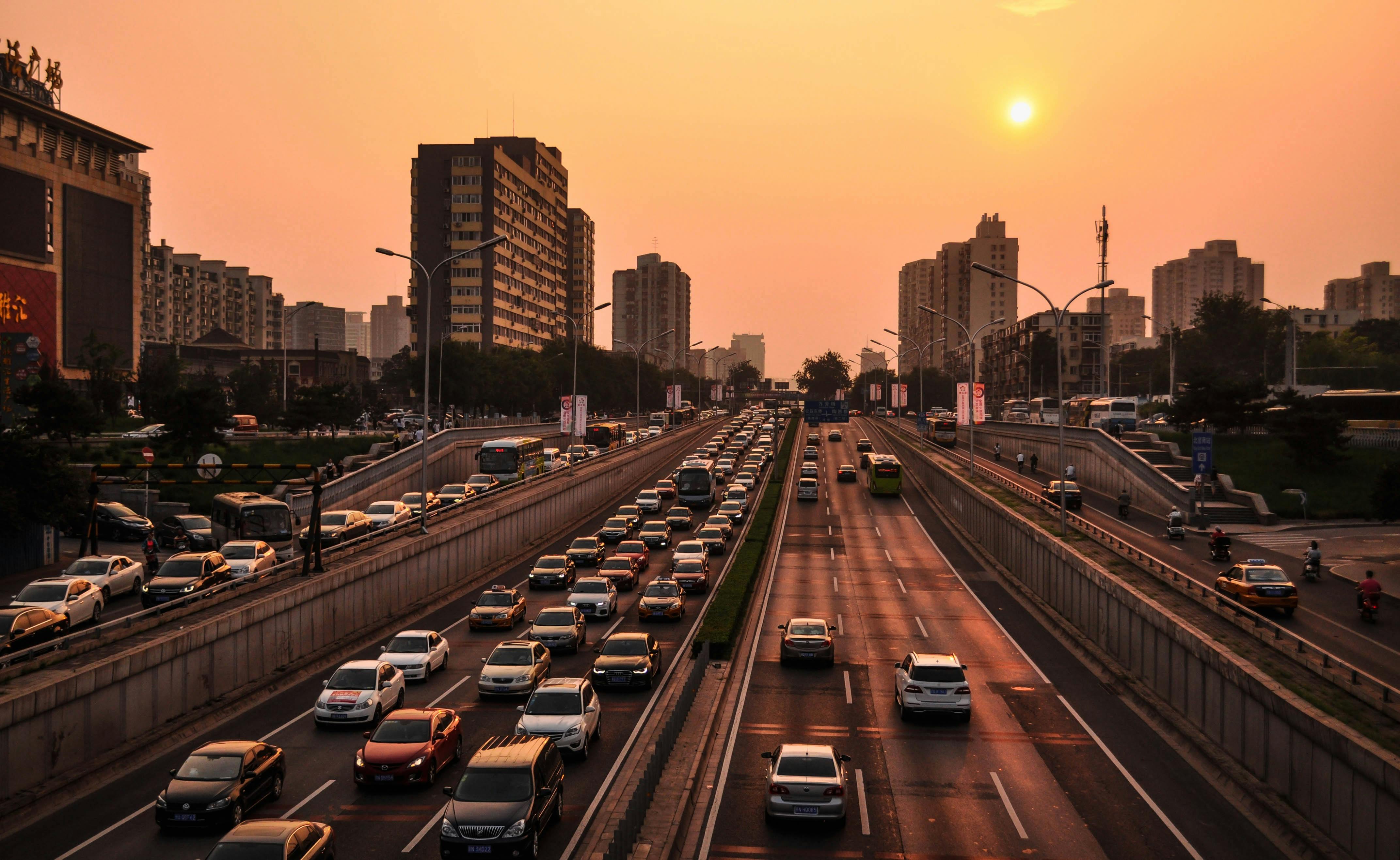
Implementing Carpooling and Ride-Sharing Policies to Alleviate Traffic Woes
One effective strategy to address traffic congestion is implementing carpooling and ride-sharing policies. Carpooling involves multiple individuals sharing a vehicle to travel together, often for their daily commute or a specific trip. Ride-sharing, on the other hand, involves individuals requesting rides through mobile applications and being matched with drivers heading in the same direction.Implementing such policies have various benefits:
- Reduced traffic congestion: By encouraging more people to share rides instead of each driving their own vehicles, the number of cars on the road can be significantly reduced. This decrease in traffic volume can help alleviate congestion, especially in peak hours.
- Improvements in air quality: Fewer vehicles on the road mean reduced emissions and air pollution. As carpooling and ride-sharing reduce the number of cars travelling, they contribute positively to air quality by reducing environmental impact.
- Time and cost savings for commuters: Carpooling and ride-sharing can save time by utilizing high occupancy vehicle (HOV) lanes or carpool lanes, which are often less congested compared to regular lanes. Additionally, sharing fuel and toll costs can provide financial relief for participants.
- More efficient use of resources: By maximizing the capacity of each vehicle on the road, carpooling and ride-sharing make better use of existing transportation infrastructure like roads, parking spaces, and fuel stations.
- Enhanced social interaction and community building: Carpooling provides an opportunity for individuals to connect with others who live or work in their vicinity. It fosters camaraderie and positive social interaction among passengers who can share stories, interests, or even professional connections during their commute.
To implement these policies effectively:
- Establish dedicated carpool lanes: Designating specific lanes for carpooling enhances its convenience and promotes faster travel times for participants.
- Incentivize participation: Implement incentives like reduced toll fees, parking fee waivers, or discounts for carpoolers and ride-sharers. This can encourage more people to participate and make these options more appealing.
- Collaborate with employers and educational institutions: Develop partnerships with large employers, schools, and universities to encourage commuting arrangements such as creating ridesharing programs, offering preferential parking spaces for carpoolers/ridesharers or providing other incentives through partnerships.
- Provide clear information and guidance: Ensure that comprehensive information is readily available on carpooling and ride-sharing options, including how to start or join a carpool or choose a rideshare service. Public awareness campaigns can help spread this information effectively.
- Use technology to simplify logistics: Facilitate the process of finding rideshare partners or suitable carpool groups through online platforms, mobile applications, and connecting interested individuals in a user-friendly environment.
By promoting and implementing carpooling and ride-sharing policies, cities can significantly alleviate traffic congestion, reduce pollution levels, improve commuter experience, and efficiently utilize existing transportation resources. These strategies not only benefit individual commuters but also contribute toward building more sustainable and connected communities.
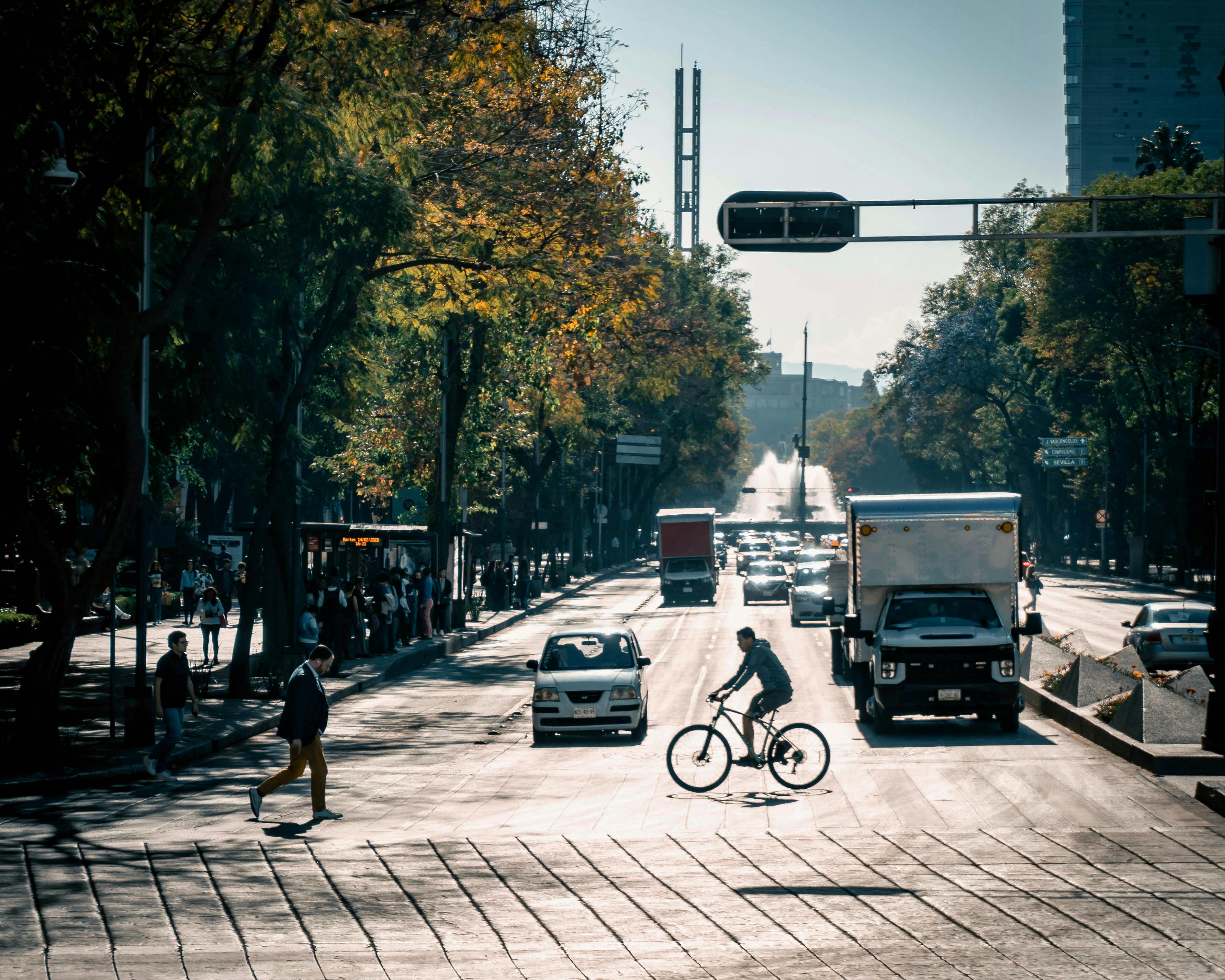
Bicycle Lanes and Pedestrian Paths: Encouraging Eco-Friendly Alternatives
Bicycle lanes and pedestrian paths play crucial roles in promoting eco-friendly alternatives for transportation. Designed with the intention of reducing traffic congestion, improving road safety, and supporting active modes of transportation, these dedicated spaces provide a safe haven for cyclists and pedestrians to commute, exercise, or simply enjoy the outdoors. Let's delve into the details.Bicycle lanes prove to be integral for creating a bicycle-friendly city with improved cycling infrastructure. Striped along the edges or marked vigorously in cities, these delineated lanes separate bicyclists from motor vehicles, creating a physical barrier that enhances safety for all road users. By availing this bike-specific space, cyclists can pedal through city streets free from dangerously interacting with motorized traffic, leading to a heightened sense of security, boosting individual willingness to choose bicycles as viable alternatives to cars.
Moreover, bicycle lanes encourage active living and minimize environmental degradation collectively caused by polluting vehicles. By increasing opportunities for everyday exercise and incorporating cycling into people's daily routines, these lanes gently nudge individuals towards adopting more sustainable lifestyles. Equipped with proper signs and markings indicating turns and merging points, these lanes provide directions and guidance for cycling enthusiasts trying to navigate urban terrains safely.
On the other hand, pedestrian paths also live up to their potential by shedding light on eco-friendly commuting practices. Devoted exclusively to walkers, runners, and those using assistive mobility devices like wheelchairs or scooters, pedestrian paths serve as connective tissue within urban areas where vehicular access may be limited or altogether unavailable. Such dedicated walkways seamlessly weave through parks, alongside riversides, or beneath urban expressways, offering beautiful routes that encourage individuals to embrace walking instead of relying solely on cars.
Pedestrian paths offer numerous advantages beyond being active modes of transport. Firstly, they pave the way for developing walkable neighborhoods and foster a sense of community spirit. Enabling engagement and social interactions between residents who stroll along the pathways, these pedestrian-friendly routes strengthen social bonds and promote a more vibrant neighborhood atmosphere.
Secondly, pedestrian paths create safer passage for vulnerable walking populations such as children, the elderly, or physically impaired individuals. By separating pedestrians from vehicles, these pathways minimize the risks of accidents and give pedestrians the peace of mind they deserve as they navigate their surroundings.
Lastly, by opting for pedestrian paths and avoiding motorized transport, individuals contribute drastically to reducing harmful emissions and pollution levels. Not only is this beneficial for environmental sustainability, but it also improves overall air quality, making cities healthier and more enjoyable places for everyone.
In conclusion, bicycle lanes and pedestrian paths offer remarkable solutions for encouraging eco-friendly alternatives in urban environments. From enhancing road safety to promoting active lifestyles, these dedicated spaces empower individuals to choose sustainable modes of transport over heavily reliant vehicular options. By expanding and improving infrastructural support like bicycle lanes and pedestrian paths, communities can inevitably nudge towards a greener future where eco-consciousness takes center stage in relieving traffic congestion, reducing emissions, and fostering healthier takes on commuting.
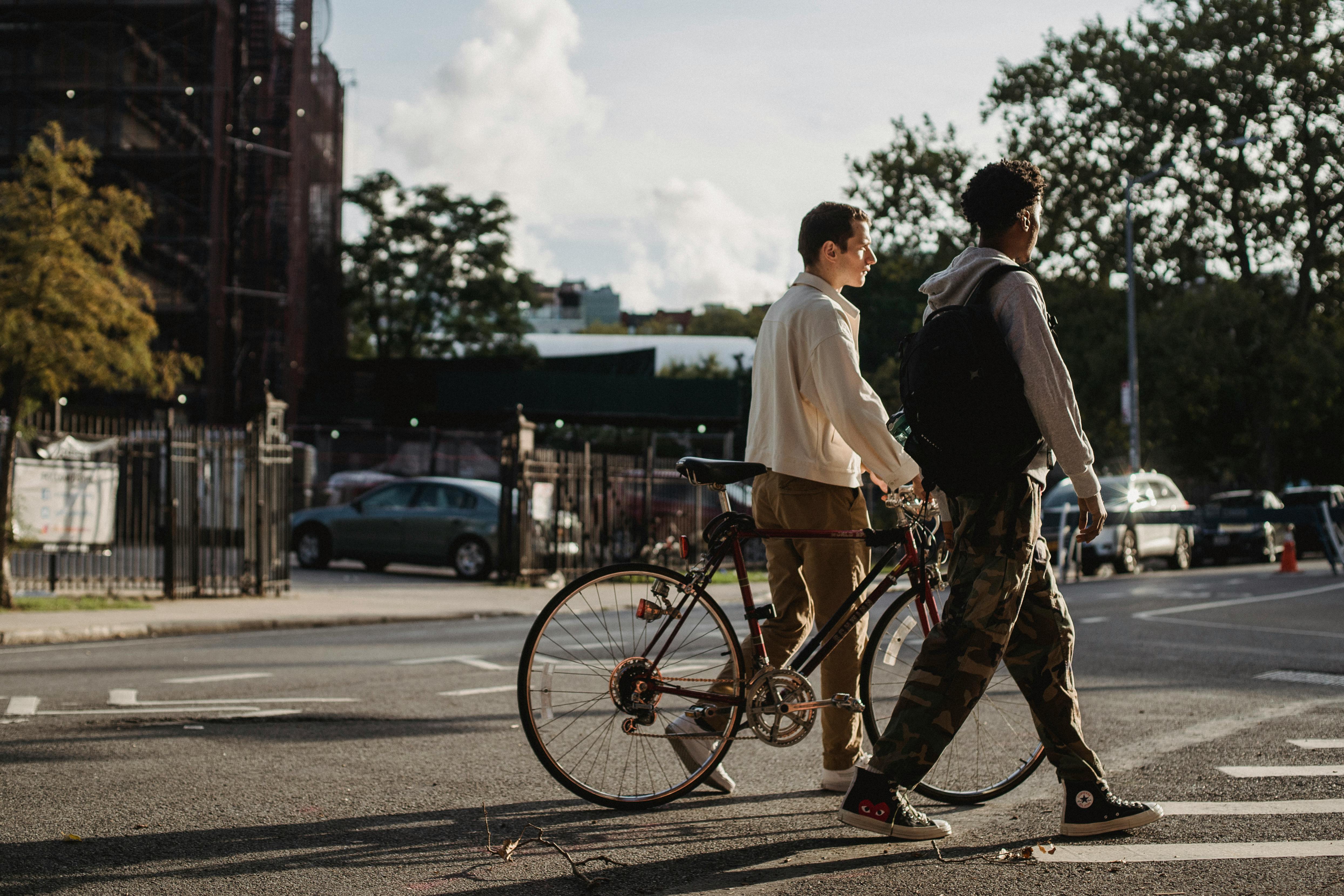
The Future of Traffic: Autonomous Vehicles and Smart City Integrations
The future of traffic holds the promise of revolutionary advancements through the integration of autonomous vehicles and smart cities. As technology progresses, we're inching closer to a world where self-driving cars become the norm. Such a transformation could lead to numerous positive changes in how we perceive transportation and navigate our daily lives.One of the main aspects shaping this future is the advent of autonomous vehicles. Self-driving cars are being developed by various technology giants and automotive manufacturers, aiming to eliminate human error from driving. Through sensors, cameras, and artificial intelligence, these vehicles can interpret their surroundings and make decisions accordingly. This could significantly enhance road safety by mitigating accidents caused by human discrepancies, distractions, or impaired driving.
Additionally, autonomous vehicles have the potential to revolutionize traffic patterns. With interconnected systems and advanced algorithms, they can intelligently optimize routes to avoid congestion and reduce travel time. By minimizing stop-and-go situations, city traffic could flow more smoothly, leading to reduced fuel consumption and greenhouse gas emissions.
In turn, this transformation requires well-developed smart city integrations. A smart city is a technologically advanced urban area that applies information and communication technologies to enhance efficiency and improve the quality of life for its inhabitants. Integrations between transportation networks, infrastructure, and data systems play a critical role in transforming cities into smart hubs.
Smart city technologies collect real-time data from sensors placed throughout urban landscapes. In the context of traffic, these sensors monitor vehicle movement, air quality, noise levels, and road conditions. By turning this data into actionable insights through machine learning algorithms and artificial intelligence, cities can improvise traffic management strategies effectively. Traffic lights could dynamically adjust timings based on real-time vehicle flows resulting in better traffic flow while reducing operational costs.
Moreover, smart city integrations can contribute to more sustainable transportation practices. As autonomous vehicles establish prominence on roads, we will witness increased use of electric vehicles (EVs) and collaborative mobility solutions like ride-sharing and autonomous public transport. EV charging infrastructure can be integrated into existing transportation systems, facilitating convenient charging for electric cars and reducing dependence on fossil fuels.
Further advancements could emerge from intertwining self-driving vehicle technology with smart city transportation networks. With standardized communication protocols, autonomous cars of different brands could seamlessly interact with traffic control systems, infrastructure, and pedestrians around them. This harmonious integration would ensure safe and efficient mobility.
Nonetheless, the future of traffic comes with challenges that must be addressed. Cybersecurity risks need to be assessed and managed to safeguard autonomous vehicles and data networks from potential threats. Privacy concerns must also be attentively considered when harvesting and sharing extensive amounts of data about citizens' daily movements.
Additionally, as we transition towards this future, there will likely be an adaption period where a mix of autonomous vehicles and conventional ones coexist on the roads. This transition ought to be carefully managed to ensure road safety for all users.
In summary, the future of traffic holds immense potential due to the integration of autonomous vehicles and smart city technologies. We imagine a landscape with enhanced safety, reduced congestion, optimized traffic flow, increased sustainability, and improved quality of life for every commuter. However, the realization of this vision requires collaboration among governments, manufacturers, and urban planners to create regulations frameworks and design infrastructure that can support this transformation effectively.
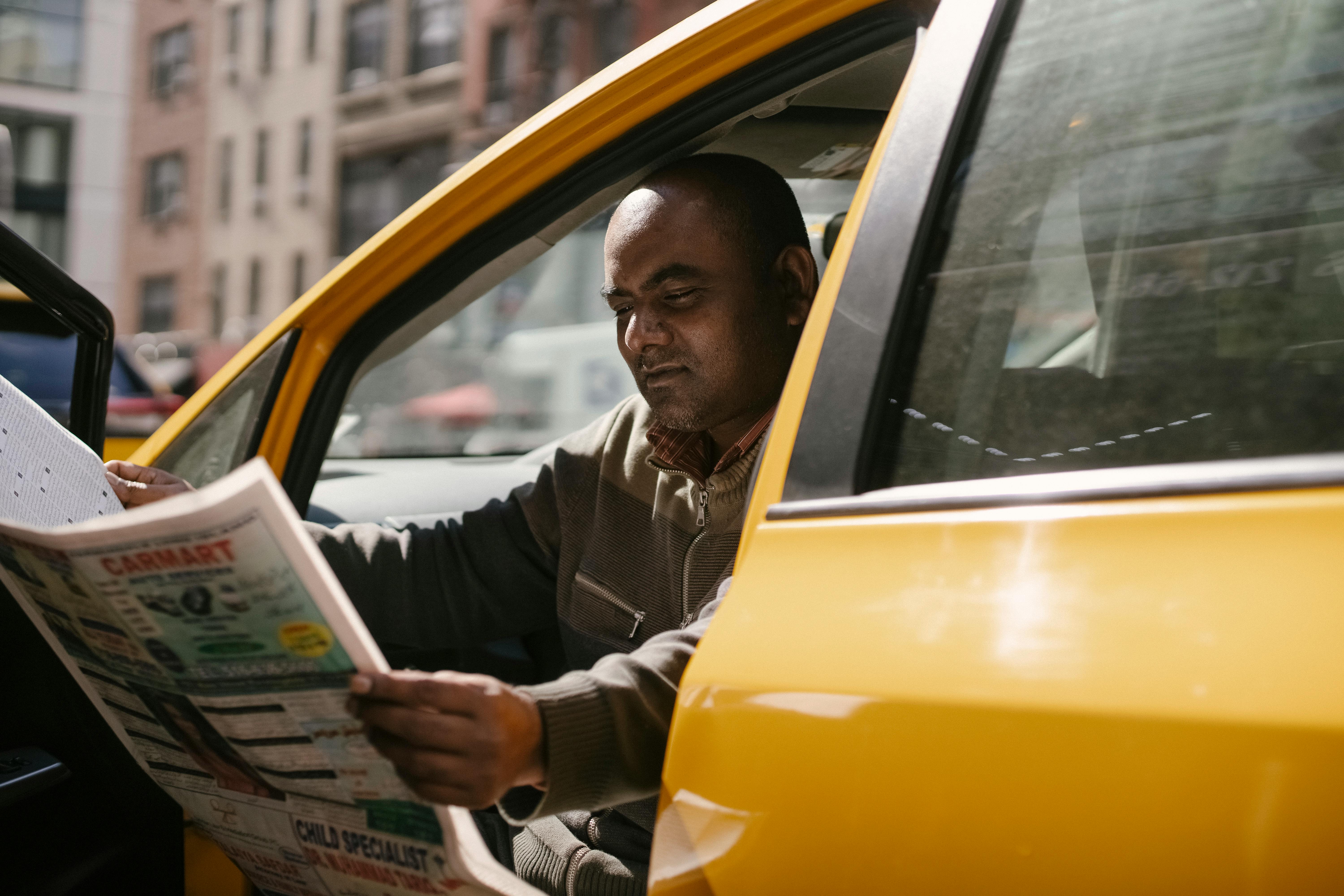
Analyzing the Role of Holiday Seasons in Traffic Volume Changes
The holiday season, with its festivities, unique traditions, and overwhelming rush, has a substantial impact on traffic volume across various regions. Studying the role of holiday seasons in traffic can provide valuable insights into planning and managing transportation systems during these times. Here are several key aspects worth considering:- Increased Leisure and Shopping Activities: During holidays, people engage in various leisure activities such as shopping, visiting friends and family, attending parties, and exploring tourist destinations. These leisure pursuits often result in higher traffic volumes as more individuals hit the roads for these purposes.
- Longer Duration of Trips: Comparatively longer trips are common during holiday seasons when people may travel greater distances to reunite with loved ones or embark on vacations. This not only contributes to heightened traffic but also leads to congestion on major roadways connecting popular destinations.
- Shifts to Personal Vehicles: During holidays, there is often a significant shift towards personal vehicle usage rather than public transportation. People choose personal vehicles primarily due to convenience, flexibility in travel timings, and carrying gifts or belongings. This surge in private vehicle usage substantially escalates overall traffic density.
- Irregular Traffic Patterns: In typical working days, commuter traffic tends to peak during morning and evening rush hours. However, during holiday seasons, this pattern changes drastically. With altered work hours owing to vacation time or shorter workdays for those who continue working, traffic volume spreads more evenly throughout the day.
- Intensified Traffic on Major Routes: Popular holiday destinations usually experience a surge in traffic volume due to increased tourism and festive events. Common examples include beach towns during summer vacations or ski resorts during winter holidays. Such destinations witness higher traffic flow on main connecting routes leading to congestion at peak times.
- Weather Conditions: Severe climatic conditions like heavy snowfall or storms often disrupt traffic patterns during the holiday season. Road closures, accidents, and alternative routes cause significant congestion and delays, particularly in regions unaccustomed to extreme weather events.
- Traffic Control Measures: Considering the influx of traffic during holiday periods, transportation authorities sometimes implement alternative traffic management strategies. These measures can involve signal timing adjustments, temporary road closures, or expanding public transportation services to ease congestion and improve overall traffic flow.
- Impact on Urban Areas vs. Rural Regions: While holiday season traffic implications are commonly associated with urban areas, rural regions also face unique challenges. Increased travel to rural areas for countryside getaways or cultural festivals results in rising traffic volumes on smaller roads or country lanes that may not be capable of handling heavy loads.
Analyzing the role of holiday seasons in traffic volume changes helps transportation planners and policymakers gain a better understanding of dynamic traffic patterns. This knowledge enables them to make informed decisions related to infrastructure upgrades, alternative transportation solutions, and adaptable traffic control measures to optimize the flow of vehicles while ensuring safer and more efficient holiday travel experiences for all.
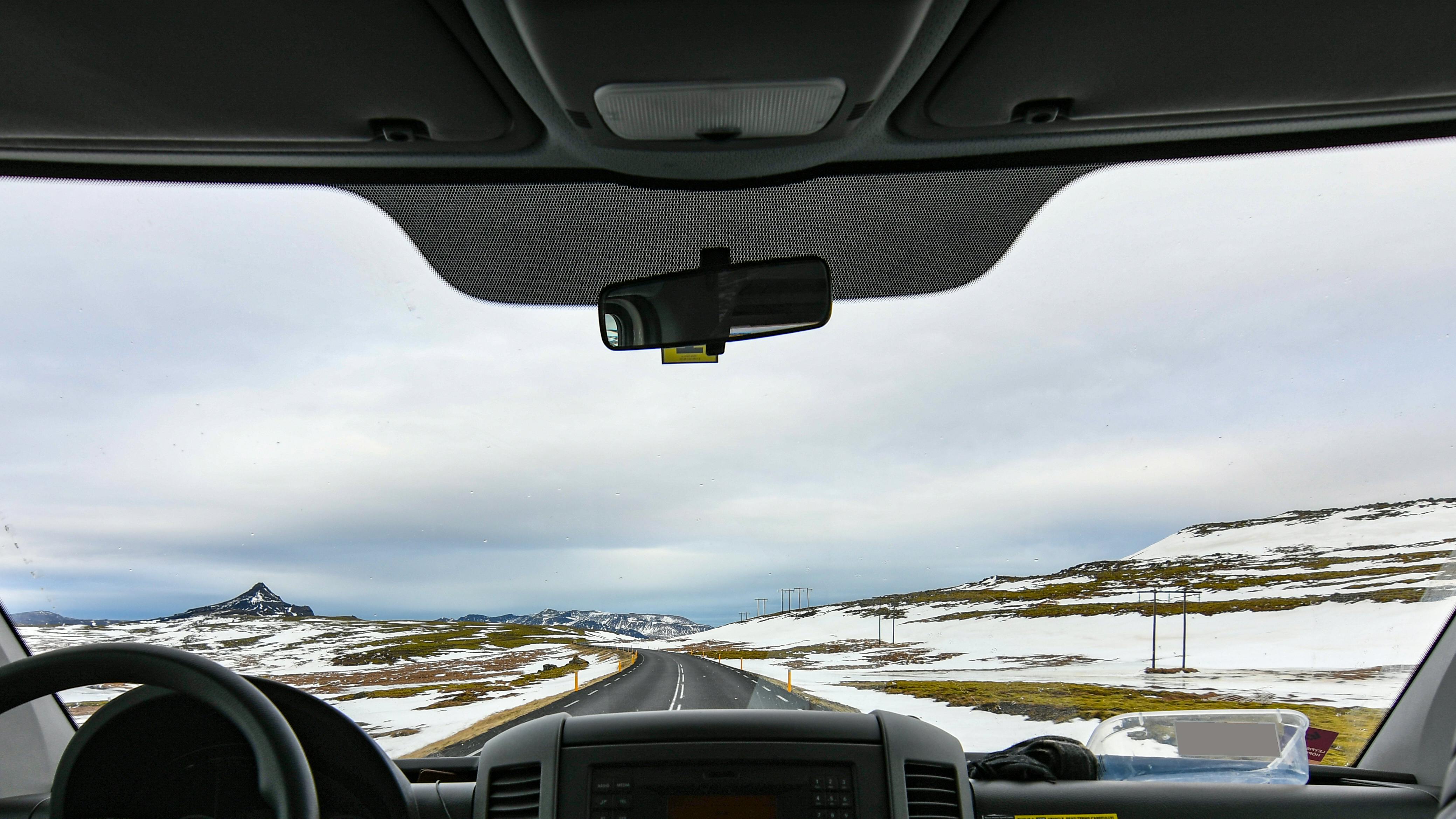
Legal Frameworks Governing Traffic Management: Rights, Obligations, And Enforcement
traffic management refers to the practices, policies, and regulations implemented by governing bodies to ensure the safe and efficient movement of vehicles and pedestrians on roadways. It encompasses a complex network of rules that are enforced to maintain order and protect public safety. To examine the legal frameworks governing traffic management, we must consider the rights, obligations, and enforcement mechanisms involved.- Traffic Laws: Every country or region has laws specifically designed to regulate traffic. These laws define various aspects of driving behavior, such as speed limits, right-of-way rules, signage requirements, and required vehicle equipment. Traffic laws are vital as they establish a standardized system that all drivers must follow, promoting safety and reducing accidents.
- Road Signs and Signals: Within traffic laws, there are specific guidelines dictating the installation and usage of road signs, signals, and markings. This includes stop signs, yield signs, traffic lights, speed limit signs, crosswalk markings, and more. Compliance with these signals is crucial for safe and efficient traffic flow.
- Driver Licensing: To ensure only qualified individuals operate vehicles on public roads, most jurisdictions require drivers to obtain a driver's license. Licensing procedures typically involve completing a written test assessing knowledge of traffic laws and undertaking a practical driving examination. By enforcing driver licensing policies, authorities minimize risks associated with inexperienced or unqualified drivers.
- Vehicle Registration and Standards: Governments often mandate vehicle registration procedures for both personal and commercial vehicles. This process ensures each vehicle has met certain safety standards (such as emissions control systems) before it can legally operate on the road. Regular inspections may also be mandated to maintain vehicle roadworthiness and prevent accidents caused by poorly maintained vehicles.
- Enforcement Mechanisms: To uphold traffic laws and regulations effectively, authorities utilize various enforcement mechanisms such as police officers (traffic cops), automated systems (speed cameras or red-light cameras), and fines or penalties. These mechanisms serve to deter violations, promoting compliance and safer road usage.
- Rights and Obligations of Road Users: Different laws specify the rights and obligations of road users. For instance, pedestrians generally have the right-of-way on marked crosswalks, while drivers must yield to them. Likewise, drivers should follow lanes, use turn signals when changing direction, obey speed limits, avoid driving under the influence, wear seat belts, and respect other road users' rights to ensure orderly and secure traffic management.
- Penalties and Consequences: Violating traffic laws may result in penalties, fines, points on a driving record, or even suspension of driving privileges. These consequences are significant deterrents against reckless or unsafe driving practices. By implementing suitable penalties and consistent enforcement practices, authorities aim to maintain law-abiding behavior on the roads.
It is crucial for road users to become aware of these legal frameworks governing traffic management as ignorance about traffic laws can compromise safety and lead to potentially costly outcomes in terms of fines or accidents. As responsible users of public road networks, understanding one's rights, obligations, and the broader enforcement mechanisms ensures safer roads for everyone.

The Software Behind Traffic Lights and Signage: Algorithms and Control Systems
traffic signals and signage play a crucial role in maintaining a smooth flow of vehicles on the road. Behind these essential elements are intricate software algorithms and control systems that work tirelessly to optimize traffic management.First and foremost, traffic lights rely on sophisticated algorithms to determine when each signal should change based on different factors. These factors include the volume of vehicles approaching from different directions, pedestrian activity, and even the time of day. The software running the traffic lights incorporates sensors, detectors, and timers to gather real-time data and determine the appropriate signal sequence. This data-driven approach allows intersections to efficiently accommodate varying traffic patterns throughout the day.
To ensure optimal vehicle movement, various control systems are integrated into the overall software framework. One commonly used method is fixed-time control – where each phase has a predetermined duration. However, this approach may not be effective in handling dynamic traffic conditions or varying priorities at an intersection. Control systems also employ actuated control mechanisms that utilize sensors embedded in the roads or cameras to detect vehicle presence and modify signal timings accordingly.
To regulate traffic at busy junctions or during peak periods, adaptive control systems come into play. Using advanced algorithms, these dynamic systems continuously reevaluate road conditions by gathering data from multiple sensor inputs. The software adjusts traffic signal timings in real-time to maximize efficiency by preventing excessive traffic buildup on specific approaches, expediting bottleneck clearance, or adapting to changing levels of user demand.
Apart from maintaining order through traffic control signals, software algorithms also assist with signage systems, such as variable-message signs (VMS). VMS are vital for providing real-time information to drivers regarding potential hazards, accidents, diversions, weather conditions, or even promoting public awareness campaigns. The underlying software coordinates these messages and electronically displays relevant information in a timely manner.
The software algorithms that govern traffic lights and signage communicate with various central control centers for coordination across different intersections or road segments in a city or region. These command centers receive data from multiple sources, including traffic cameras, vehicle counters, and weather forecasts. Control systems consolidate and analyze this collected data to optimize traffic flow efficiently.
Next-generation traffic systems are witnessing advancements like predictive analytics and machine learning algorithms. By utilizing historical traffic patterns and real-time linked data, these algorithms can predict likely future congestion points or proactively adjust signal timings based on predicted incidents or events.
Overall, the software that powers traffic lights and signage represents a blend of complex algorithms and control systems. These smart systems dynamically respond to changing traffic instances, aiming to enhance efficiency, reduce travel times, minimize accidents, and promote safer driving experiences for all road users.

